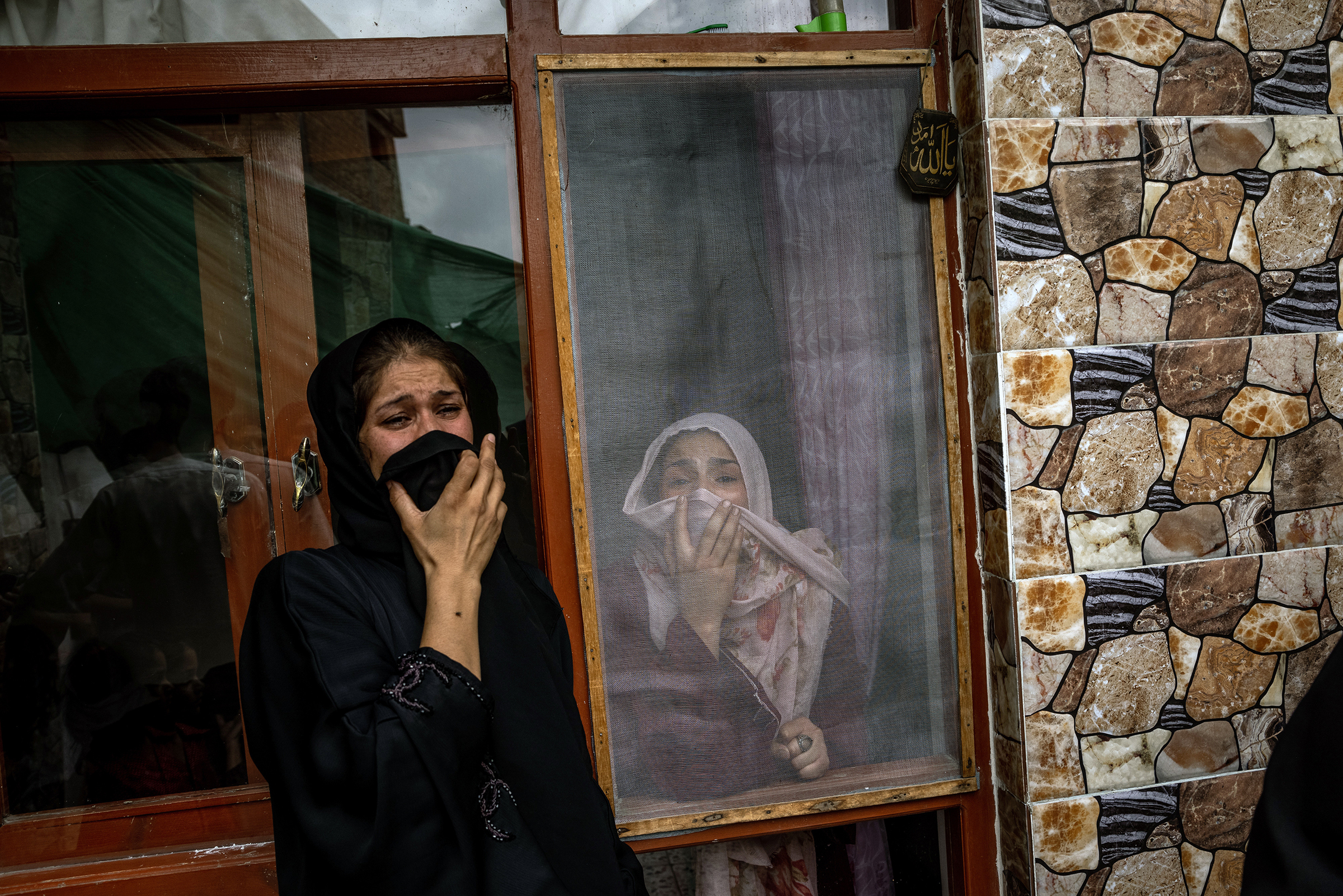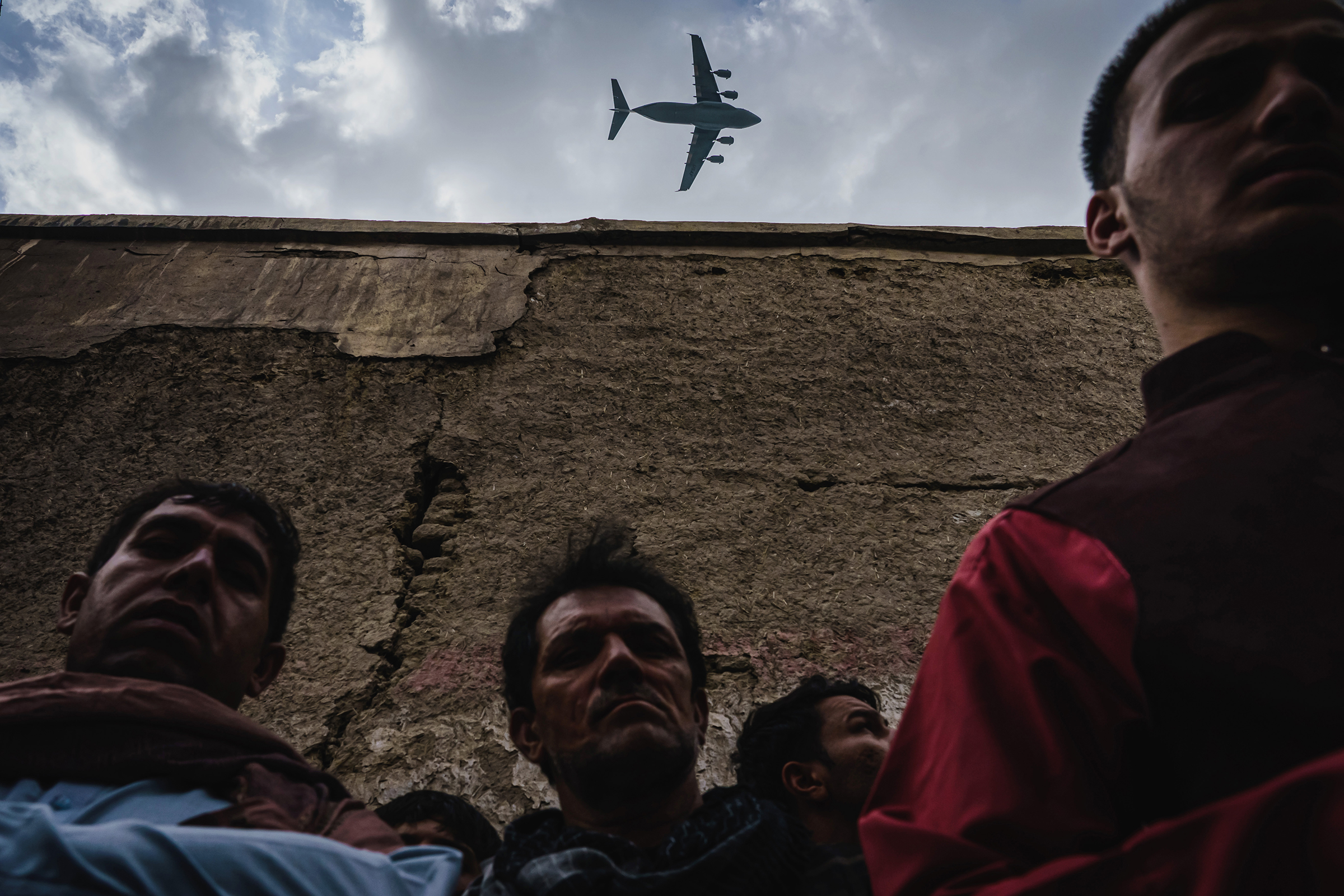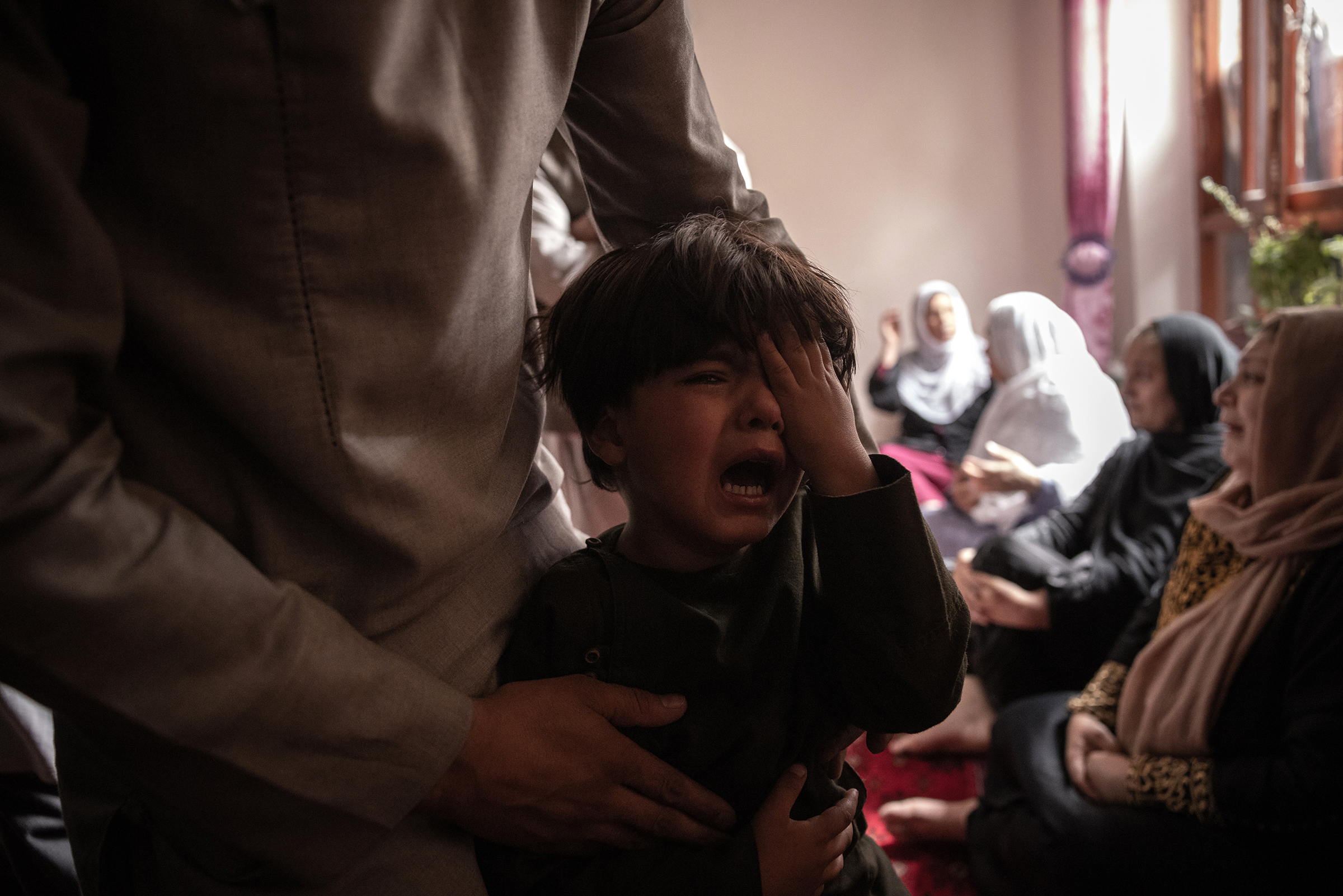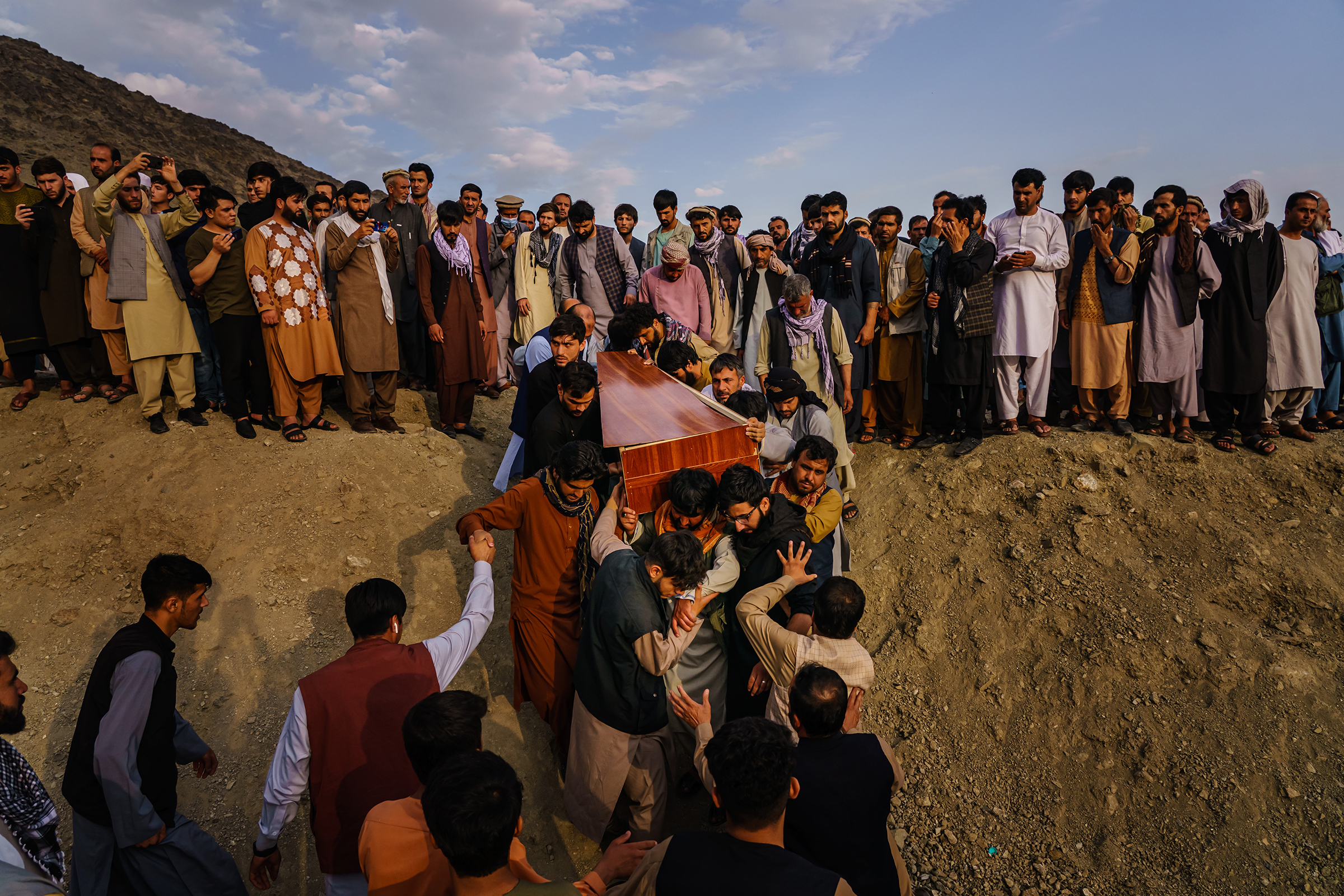Days after ISIS-K terrorists killed more than 100 Afghans and 13 U.S. troops at Kabul’s airport, the U.S. military obtained intelligence that another attack was imminent. MQ-9 Reaper drones were deployed above the city, running wide race-track patterns day-and-night, hunting for the smallest clue that could potentially prevent another tragedy.
Based on the information that a sedan could be used in the next attack, the drones began following a white Toyota Corolla in a working class neighborhood of Afghanistan’s capital city. Through the planes’ high-resolution cameras, the U.S. military watched the vehicle as it made various stops around Kabul and observed several men pack it with large bundles, which the analysts believed were explosives.
On Aug. 29, after hours of observation, U.S. commanders felt they had collected enough information to stop what they believed was a suicide bomber preparing to kill American troops finishing the last stages of the U.S. military withdrawal from Afghanistan. A military officer authorized a drone operator to launch a Hellfire missile to obliterate the target. The strike hit the car, the threat was eliminated—or so the military thought.
After two weeks of reviewing the strike and subsequent evidence about what was hit, the Pentagon acknowledged on Friday that the drone strike was a tragic mistake that killed 10 civilians, including seven children. The U.S. military’s admission drew immediate criticism both about the Biden Administration’s hasty withdrawal efforts from Afghanistan and its counterterrorism plan in the absence of a U.S. troop presence there. President Joe Biden himself initially held up the drone strike as an example of success in his so-called “over-the-horizon” strategy to respond to terrorist threats from afar.

Biden has yet to respond publicly to the announcement regarding the mistaken drone strike. But General Kenneth McKenzie, commander of U.S. military operations in the Middle East, held a video teleconference with reporters at the Pentagon on Friday and owned up to the fatal error. “At the time of the strike, I was confident that the strike had averted an imminent threat to our forces at the airport,” McKenzie said. “Our investigation now concludes that the strike was a tragic mistake.”
Under the “over-the-horizon” approach, targeting information and intelligence on suspected terrorist activity in Afghanistan will derive largely from airborne surveillance, captured communications chatter and images captured by drones circling overhead rather than U.S. and partner forces on the ground. As the civilian casualties in Kabul demonstrate, no technology can substitute for having trained eyes on a target.
What the military believed was an ISIS-K operative turned out to be a longtime worker for a U.S. aid organization, Zemari Ahmadi, who had no link to the terror group. What the military believed was a terrorist safe house turned out to be a home full of small children. What the military believed were explosives were most likely water bottles.
“I offer my profound condolences to the family and friends of those who were killed,” McKenzie said, adding the U.S. was “exploring the possibility” of payments to compensate the victims’ surviving family members.

The U.S. military typically fails to release details about civilian casualty investigations and, if they do come to light, the results are held and compiled for many months before they are formally released. However, in the days following the airstrike, news organizations including the New York Times and Washington Post published high-profile investigations that contradicted the Pentagon’s initial claims.
McKenzie dismissed the notion that the mistaken drone strike served as any sort of bellwether for the over-the-horizon strategy. Future strikes will have more robust precautions and more certainty, he said; at the time of the Kabul strike, the military felt it was under “imminent threat” of attack and had to act. “It’ll be different done under different rules of engagement,” he said. “We would have a lot more opportunity probably than we had, under this extreme time pressure to take a look at the target.”
Before such strikes, the U.S. military typically conducts an intelligence “soak” of the target, using drones to watch for days to try to determine a pattern of life and properly discern where civilians live and work and where militants are holed up. Military also usually intercepts communications to determine who they’re looking at. “None of these things were available to us, given the urgent and pressing nature of the imminent threat to our forces,” McKenzie said.
Even in less time constrained circumstances, though, the U.S. government has made mistakes. The targeted-killing drone program targeting terrorist operatives, which is primarily run by the CIA and the U.S. military’s secretive Joint Special Operations Command, has long been accused of inadvertently killing civilians. Numbers vary widely, but according to the Bureau of Investigative Journalism, a London-based organization that has tracked U.S. drone strikes, estimates that between 300 to 909 civilians have been killed in such attacks in Afghanistan since January 2004.

Separately, the Pentagon acknowledges that U.S. airstrikes have killed more than 1,400 civilians across Iraq and Syria, since operations against ISIS began in 2014. Airwars, another London-based nonprofit that tracks civilian casualties in war zones, puts the figure much higher. It estimates about 29,000 innocent people have been killed by U.S.-led air strikes.
“The U.S. military’s initial, stubborn insistence that this was a ‘righteous strike’—despite compelling and immediate evidence to the contrary—raises fundamental questions about why U.S. military commands so routinely ignore reports of tragedies from affected communities,” says Chris Woods, director of Airwars. “It can’t be right that civilians only appear to have accountability when the investigative might of U.S. media giants is brought to bear.”
Other human rights groups said the U.S. military was only admitting responsibility for the civilian casualties in this case because it was widely documented. Drone strikes are often conducted in rural areas far from cameras in Iraq, Syria, Yemen, Pakistan, Libya and Somalia. What about the strikes the American public never sees?
“What makes this tragedy different from so many others during the war in Afghanistan is that because of public attention, the U.S. military has been forced to investigate and apologize, and is exploring making amends,” Hina Shamsi, director of the ACLU’s National Security Project, said in a statement.
“The United States’ record on lethal strikes is generally a refusal to acknowledge families’ devastating losses, weak or non-existent investigations, and no amends whatsoever, even when the evidence of wrongdoing is staring us in the face,” she said. “This strike should be an inflection point and wake-up call at long last.”

In the two decades following the Sept. 11, 2001 attacks, in the conflicts with al-Qaeda, ISIS and other terrorist groups, the U.S. has taken a very broad view of the legal standards that govern military operation overseas, viewing much of the world from Washington as a battlefield. The Biden Administration is now revising U.S. policy governing the use of lethal force against terrorists, but the President has yet to come to a decision even after the withdrawal from Afghanistan, which has drawn fire from Republicans.
The U.S. has left Afghanistan in the hands of the same Taliban militants it overthrew 20 years ago, after the group provided safe haven to the al-Qaeda operatives who plotted the 9/11 attacks. Its leaders still maintain close ties to al-Qaeda, and the nascent government being patched together in Kabul is unlikely to be able to contain the resurgence of competing terrorist groups in the region, including ISIS-K, an offshoot of the original Islamic State group in Iraq and Syria.
“The Administration claimed their ‘over-the-horizon capacity’ would work. Instead, we have another failure with deadly consequences,” Rep. Mike Rogers of Alabama, the top Republican on the House Armed Services Committee, said in a statement. “Mr. President, before more innocent lives are lost, please formulate a counterterrorism plan for Afghanistan.”
There are signs of a potential policy change. Defense Secretary Lloyd Austin, a retired four-star Army general, issued an apology to the families of the drone strike victims for the “horrible mistake.” He signaled an openness to altering future U.S. protocol by announcing a review of all authorities, procedures and processes that might have gone wrong before the Hellfire missile began hurtling toward its target in Kabul, ending the lives of 10 blameless Afghans.
With reporting by Vera Bergengruen/Washington
More Must-Reads from TIME
- Caitlin Clark Is TIME's 2024 Athlete of the Year
- Where Trump 2.0 Will Differ From 1.0
- Is Intermittent Fasting Good or Bad for You?
- The 100 Must-Read Books of 2024
- Column: If Optimism Feels Ridiculous Now, Try Hope
- The Future of Climate Action Is Trade Policy
- FX’s Say Nothing Is the Must-Watch Political Thriller of 2024
- Merle Bombardieri Is Helping People Make the Baby Decision
Write to W.J. Hennigan at william.hennigan@time.com